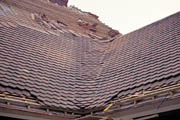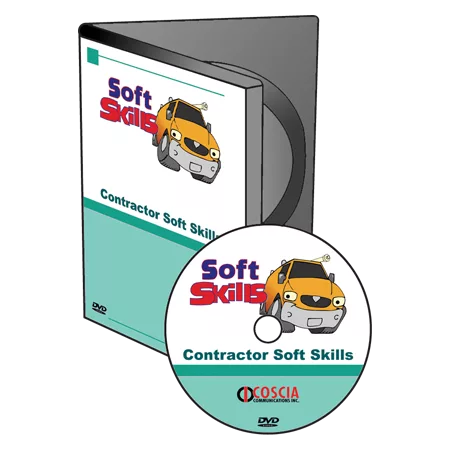What Money CAN Buy: Quality, Aesthetics and Endurance

When money is no object, the quality and aesthetics of material available for a remodeling project are almost limitless. A hundred-year roof is par for the course.
If you are lucky enough to need such a roof, Nosak Improvements of Tulsa, Okla., is the place to call. Paul Nosak, the 31-year-old principal of Nosak Improvements, got his start 12 years ago, while working out of his car and not even owning a ladder. Having been employed by a contractor in Florida where he learned the basics of roofing, Nosak began, by himself, with a repair and maintenance business in Tulsa. He had to work alone because of the high cost of workers comp. He started by passing out flyers in the Maple Ridge historical district where the homes were built in the 1920s and earlier, and had many tile and slate roofs. In the process of doing maintenance and repairs, Nosak discovered a demand that was not being met. One of his customers needed a small 3- by 4-foot section of her roof replaced. “I called every roofing company around looking for materials,” explains Nosak. “Only two places knew what I was talking about, and only one in Tulsa had clay tiles.”
Seizing the opportunity to fill a void in roofing, Nosak, a 19-year-old business major at the time, continued to work the historical district and then branched out from Tulsa to Oklahoma City, and then to Arkansas and Kansas. He specializes in Ludowici Tile and Vermont Slate. Nosak worked by himself for five years and then had enough money to instate insurance and hire someone else. “I have one of the lowest e-mod rates in the state,” says Nosak. “I have eight applicators, four helpers and four sheet metalists. In addition to slate and tile, we do 90 percent of our own metal work with copper, zinc and standing-seam metal roofs.” Nosak Improvements has done the roof on the original Governor’s Mansion in Oklahoma City and many historical homes in Tulsa and the surrounding areas, including reroofs and new construction from 2,000 to 22,000 square feet.
Transatlantic Transaction
Nosak Improvements is currently working on a 22,000-square-foot reroof of a private residence in Tulsa, which is undergoing a multimillion-dollar remodeling project. Nosak was approached by the owner’s decorator, who also happened to be a client. The owner had specified that a tile manufactured by Z.Z. Wancor of Switzerland be used. “The company is over 100 years old and uses a recipe that is over 300 years old,” says Nosak. He actually went to Switzerland to get the tile. “It was a 170-square order and the tile weighs 1,600 pounds per square,” Nosak explains. “The material had to be shipped over in 11 containers and the freight alone was $80,000!” Nosak adds that the product is very durable and is found on only one other home in the United States.Prospectus
Nosak Improvements started the job on December 10, 2000. Crews first had to tear off the old roof, which consisted of jumbo shakes and 1-by-4 battens. They then put down a 3/4-inch tongue-and-groove decking. Next came Tamko’s 45-mil AWA plan modified-bitumen underlayment. The tile itself would be nailed to a wood grid system to allow for proper ventilation. Workers laid 2-by-2 verticals every 16 inches and then 1-by-2 parallels every 6 inches all the way around. There was a total of 9,000 feet of 2-by-2’s and 35,000 feet of 1-by-2’s. The slope of the roof is 12:12, though in some areas it is 12:14. All the roof’s accessories are in copper, as were the drip edges – in this case a double drip edge that went under, as well as on top of, the tile wedge.
Highs and Lows
The installation was complicated, especially the valleys. The design used on this house has not been done in the United States. In fact, it is so complicated that the client hired a roofer from Switzerland to come and spend 10 days teaching crews the technique – something that usually takes four years to learn in Europe. Afterwards, Nosak communicated with the roofer through e-mail and photos to ensure that the installation was going right.According to Nosak, the 480 feet of valleys look rounded, as opposed to an angle. “The valley is a geometrical equation with equal sides and dimensions. All substructure points are congruent and combine to make 90- and/or 120-degree angled turns,” he explains. “However, a surface sweep is maintained — in other words, you never see an obvious angle change on the surface of the tile.” Nosak notes that during installation, it was very important to always maintain head lap. “This is done with longer tile for the valley,” he continues. “Also, as the valley is completed up the slope, it will grow wider. At this point, it becomes necessary to throw in another course. You use less valley tile in the next course after the hitch.”
It took two men from Nosak Improvements a solid four months to do the valleys. “We had to get the valleys perfect; aesthetics were critical,” says Nosak. There were 21 men on the project for the first 40 days, after which it went down to 13. This was a lot of labor for a residence. Usually, the company works one project at a time, though this is harder to do with new construction, since schedules are often beyond control.
In addition to the challenging valleys, another area that had to be addressed was the roof height requirement, in order to accommodate for vertical lift for ventilation. “Looking at the pictures, it may be hard to see that the roof sits almost 3 inches above the underlayment,” Nosak observes. Aesthetics in this case were also important. “A larger fascia could not be installed, since this would inhibit venting,” says Nosak. The height also caused another problem: gutter installation. “There wasn’t anywhere to anchor the gutter hangers, due to the 3 inches of lift,” Nosak explains. “I addressed this issue with David Bootenhoff of Rain Guard Guttering of Tulsa Inc. Through some combined research and our client’s help, we were able to locate a guttering supply company out of Germany, which had special hangers to accommodate this lift. We ordered those, and the problem was solved.”
Frozen Assets
Asked about other challenges on the job, Nosak says it didn’t help that the first month of the job was done in the snow. No, it doesn’t usually snow in Oklahoma, and when it does, it usually melts right away. But not this time. There was snow in December that lasted through early January. “We had 10 inches, and then ice,” recalls Nosak. The crews, in addition to tearing off 120 squares, had to dry in one section at a time, using a hot pressure washer to clear the snow from the roof. “We had to stick to a schedule,” says Nosak. “The roofer from Europe was coming on January 15, and we had to be ready. It wasn’t easy.”Sound Investments
It certainly is difficult work, but Nosak Improvements is the right company to be on the job. The company is currently finishing up details on the house and waiting for other construction to be completed. “Slate and tile is all we do,” says Nosak. “We don’t do wood, comps, or hot work. The only flat roofs we do are usually directly involved with a tile or slate roof.” He continues, “I have been blessed by God with the ability to work 70 to 80 hours a week, which is what it takes sometimes, and I have good workers. Years past I was always concerned about getting good quality from my workers, but over time, I have created a group that gives me quality I’m willing to pay for, and inevitably, that my clients are willing to pay for.” When asked about his definition of success, Nosak observes, “I consider my business a success when what I provide for my clients is exactly what they wanted. I stepped into a window of opportunity, so I didn’t really have to work my way up through the comps and the wood. I just started right on a tile roof.” A hands-on owner, Nosak says, “We do quality work, and I give myself to the job. I put a lot into the details.”Looking for a reprint of this article?
From high-res PDFs to custom plaques, order your copy today!




